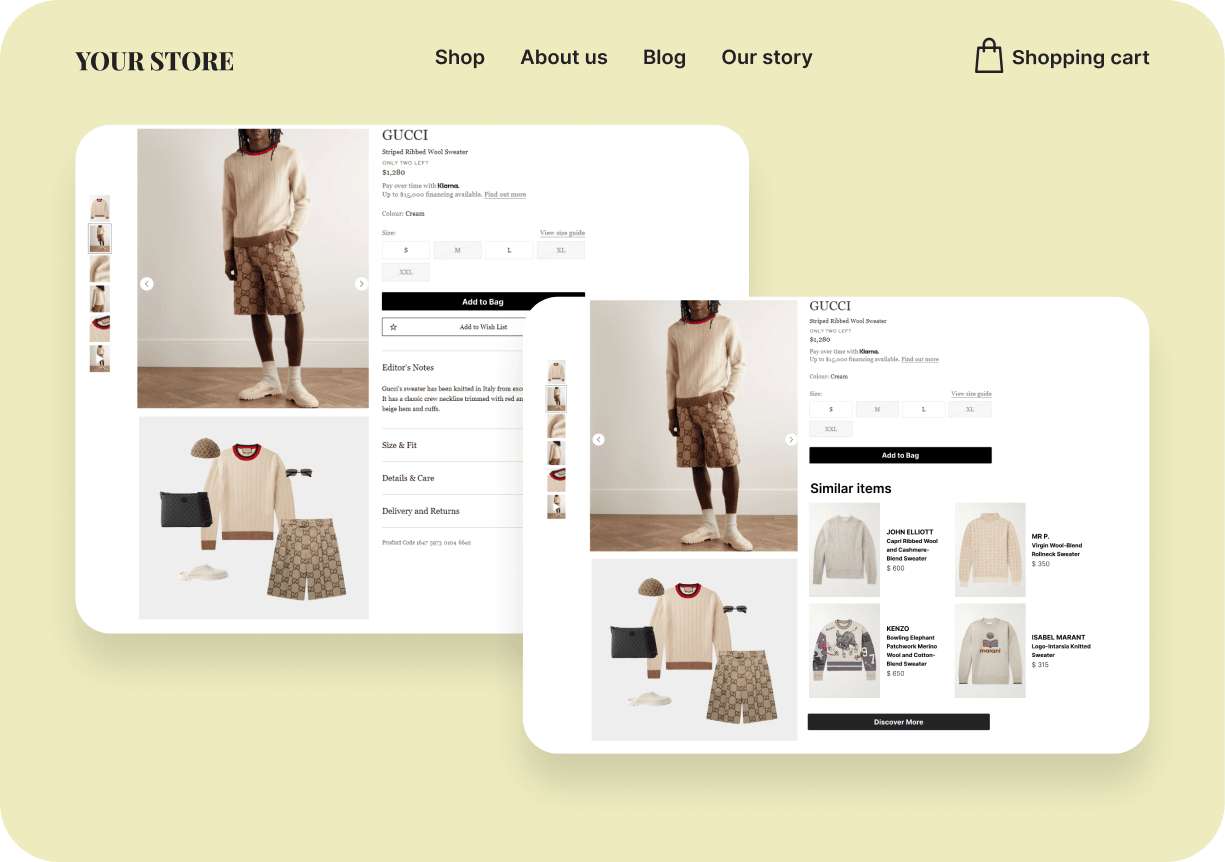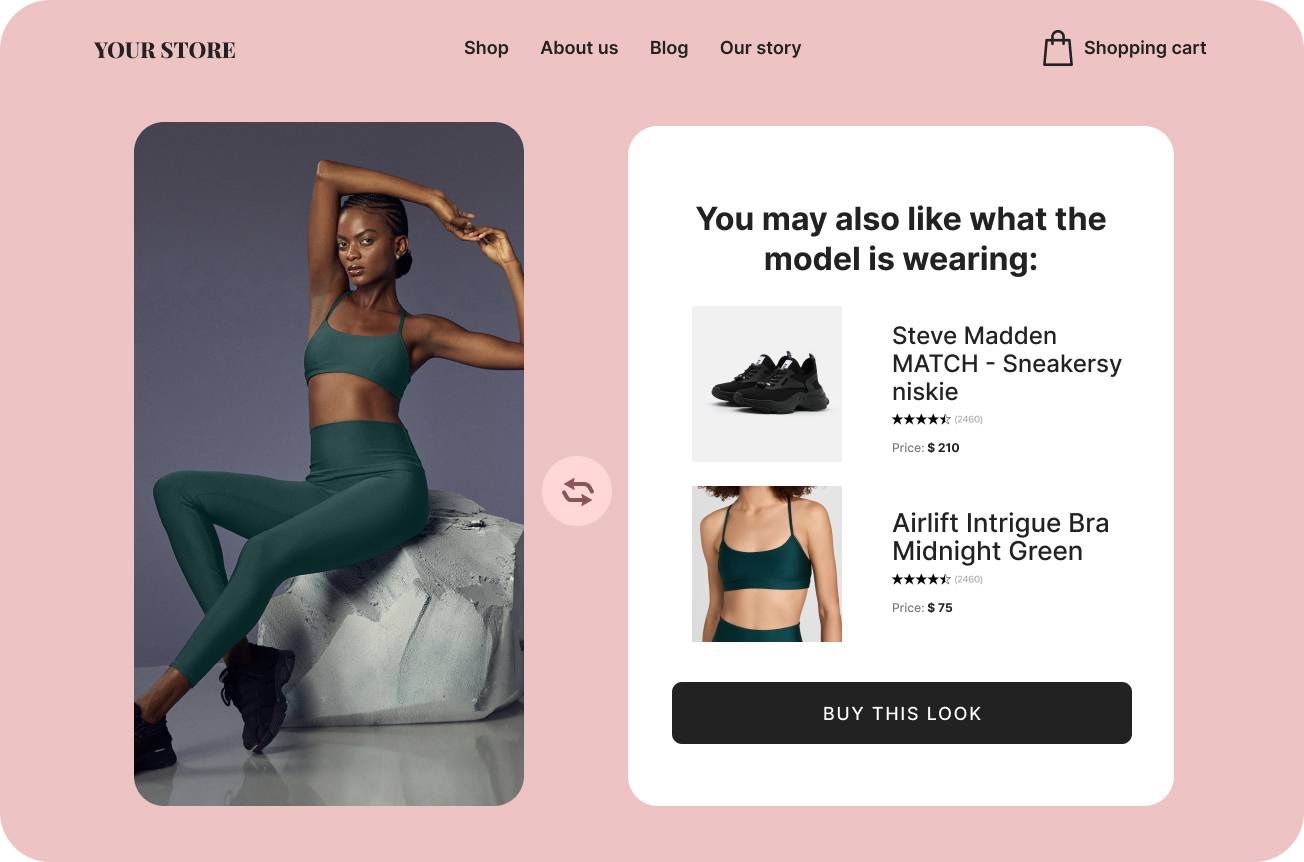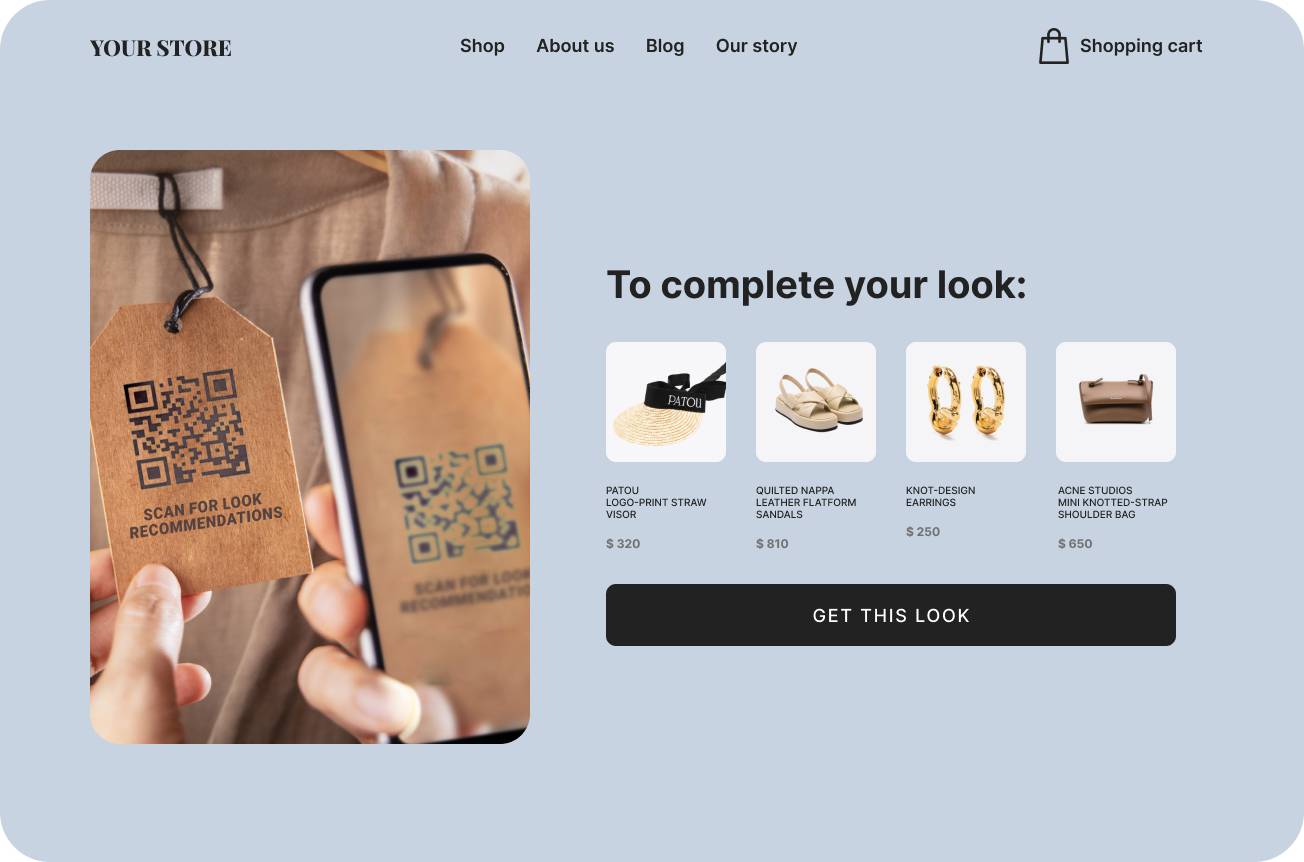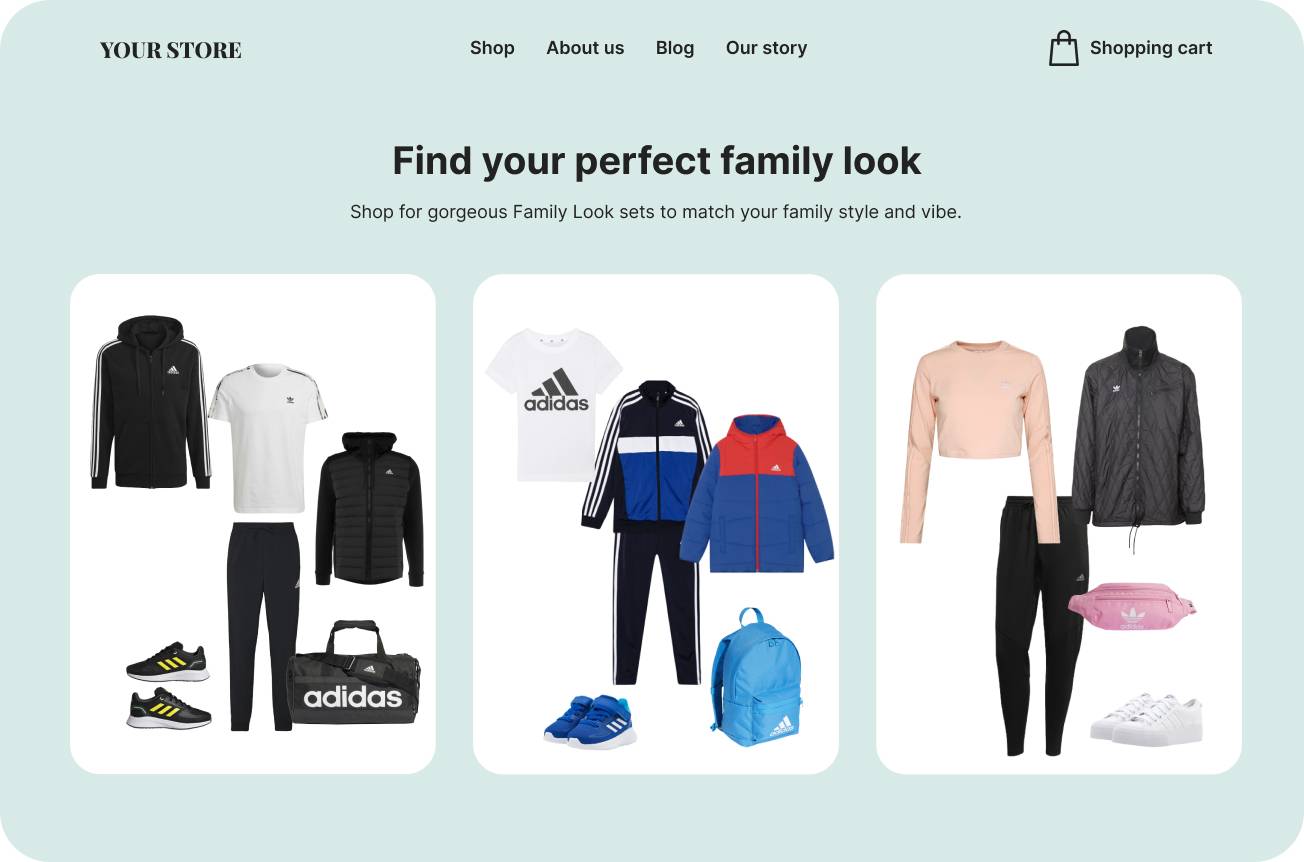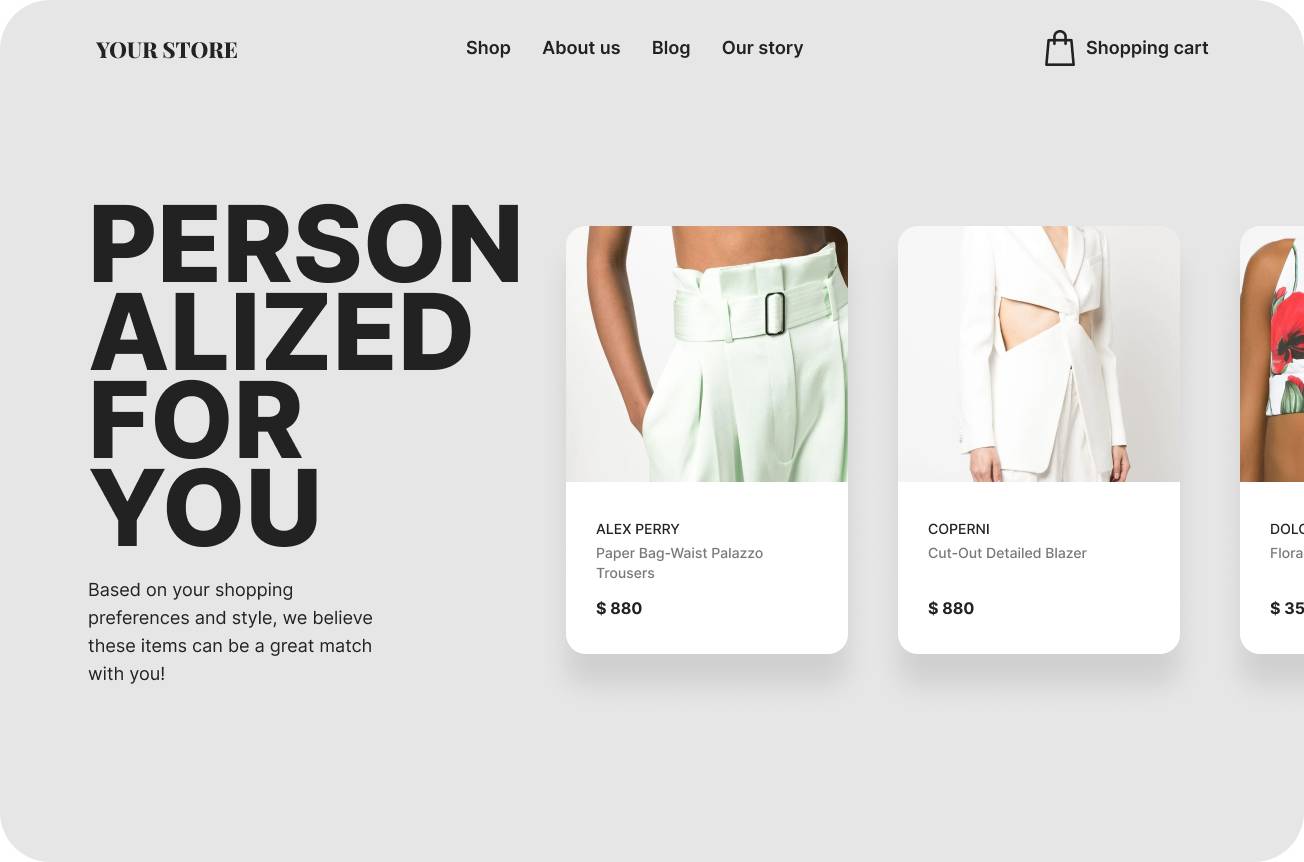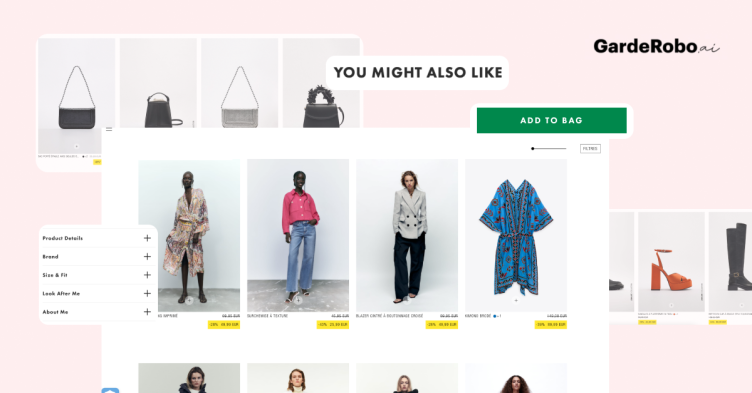Fashion brands will need to improve their product pages to attract, engage, and convert customers as they flood online to serve this growing population of potential customers. As you can imagine, competition has become much fiercer in recent years.
Retailers must also customize their product pages to improve the user experience (UX), or the customer's journey from discovering your store to purchasing, with a focus on conversion rate optimization (CRO), where changes are made to increase the percentage of buyers who check out. This is based on the fact that just 3% of shoppers make a purchase on the first visit to an online store, according to a Forrester report.
Product page optimization is thus crucial because it ensures your product pages are easy to find in search engines, contain all important information the buyer needs, and effectively convert users into potential customers.
Still wondering why your product page doesn’t sell?
In this article, we’re going to discuss seven common reasons your product page isn’t converting and ways to get around this problem.
Old-fashioned, Unoptimized Product Page
If your e-commerce site isn’t selling, it may be because your pages are unoptimized. By optimizing your pages, you may increase the likelihood that they will appear high in search results, which will help you attract the right leads to your product page. Your website won't appear in search results if it lacks an optimized page.
Your page won't attract authentic traffic, which means you won't generate revenue for your business.
Follow these 3 SEO recommended practices to optimize your pages to get the right traffic:
Integrate relevant keywords: By adding relevant keywords to your pages, you will improve your rankings in key search results.
Make sure your website loads quickly: Visitors don't want to wait for pages to load slowly, therefore you must make sure your website loads fast. To learn how to reduce the time it takes for your site to load, use a tool like Google PageSpeed Insights or hire page speed services.
Make sure your site is mobile-friendly: Since Google considers your site's mobile version, you must make sure a responsive design is implemented on your site. Delivering a great mobile experience with a responsive design will keep visitors on your site.
Lack of FAQ
Retailers must persuade customers that a product will live up to expectations to improve sales. FAQs should be specific to the product and should include the queries that other customers frequently contact customer support about.
By allowing customers to ask questions about a particular product directly through the product page, retailers like Joules and Skinnydip London curate personalized FAQs for each product. Once the customer service department answers a question, it is saved permanently within the FAQs page, making it easier for future shoppers to find all the information they need.
However, no matter how informative your product pages are if they don't give a consumer the answer they're looking for. Although some consumers are happy communicating via phone and email, live chat can offer prompt assistance in a way that’s more appealing to shoppers.
Alternatively, new communication channels are emerging every day thanks to AI technology. For instance, Victoria's Secret uses AI-powered chatbots to assist consumers in navigating the intimate world of lingerie purchasing, while H&M uses AI chatbots to respond to customer questions and offer personalized recommendations.
Poor Imagery
Product imagery plays a very important role on your product pages. Customers rely on your product images to persuade them to buy because they can't physically engage with your products when they shop online. 63% of shoppers, according to Forrester, use visuals to guide their purchasing decisions.
Make sure the images on your page represent every aspect of your product that would be of interest to your customers, such as texture, size, and the ability to view images and videos in 3D. Also, a photo’s loading speed is paramount. To avoid slow page loading times, be sure to compress image files to improve the customer experience.
Some shops like ZARA SA, Forever 21, and TOPSHOP TOPMAN usually connect Instagram photos by a branded hashtag to product pages, which sends a triggered response to the content that leads to a purchase point or negotiation opportunity afterward.
No Recommendations Carousels
Online shoppers now rely heavily on recommendations as a navigation and discovery tool on websites. Items are dynamically populated to a shopper on a webpage, app, or email based on data such as customer behavior, browsing history, or situational context—delivering a tailored buying experience. This is also part of an e-commerce customization strategy. When given personalized recommendations, 75% of customers are more likely to make a purchase, and 56% of consumers are more likely to visit a website again, according to Invesp. Skip this part, and you risk losing visitors to your competitors.
With just a few tweaks in recommendation placement and strategy, retailers can provide the right path forward for the shopper and make a big difference in customer experience as well as shopper outcomes.
With GardeRobo A.I. styling service, for example, you turn your e-store into the ultimate online style guide. Our dynamic product recommendations respond to customer choices in real-time to engage shoppers and sell stock. You can create convenient, engaging, and omnichannel customer experiences, helping shoppers to spend more in less time. We provide seven customizable solutions for retailers to pick and choose, ready to use for any clothing segment. Start providing personalized online shopping experiences to grow engagement and customer loyalty with Garderobo AI - Request your demo today!
Unclear CTA
Even if your product page might have great photos and a cute description, you probably won't get the results you want if your call-to-action (CTA) isn't engaging or easy to find.
You can experiment with placing your CTA front and center of the page, making it more noticeable there, or simplifying your design to remove distractions if your audience isn't clicking through to other pages, especially your product or checkout pages.
This will allow customers to shop around with more convenience. These buttons, however, ought to be designed in such a way that makes them stand out from the rest of the page without taking attention away from the primary CTA.
For instance, while the "Add to bag" button from Uniqlo is prominent, it is shortly followed by instructions to pay later with Klarna, check availability in-store, and view the shop's return policy. Similar examples may be found in the e-commerce stores of Zara, Kohl's, and many other retailers.
Limited Payment Options
51% of consumers stick with brands that provide personalized customer experiences, according to Accenture. In fact, 86% of consumers are willing to spend more for a smooth online experience, according to another Oracle report. Customers will become devoted to a brand if they are satisfied with it. As a result, businesses can improve client conversion rates, customer retention rates, ROI, and business growth. While there are many ways for businesses to create a seamless customer experience, adding a variety of payment alternatives on e-commerce websites can make a big difference.
Also, if you want to boost sales on your website, you need to carefully examine your checkout method. Many businesses make the mistake of having a rather complicated checkout procedure, which discourages customers from finishing their orders. The biggest mistake businesses make is trying to force customers to register to check out. Many customers don't want to waste time creating an account. They just want to purchase a few items and move on to something else.
Moreover, too many steps in the checkout process are another common reason an e-commerce site isn't selling. Customers are less likely to complete their orders if there are various steps in the checkout process that they must fill out. Customers want to complete their purchases quickly, therefore a lengthy checkout procedure may cause them to abandon the page.
Make the checkout process seamless for your customers, and experiment with including multiple payment options to further enhance the customer experience.
No Product Reviews
According to Oberlo, 79% of consumers claim they trust online reviews just as much as personal recommendations and another Northwestern University researcher found that they can boost the possibility of a sale by 270%.
However, fashion reviews aren't as straightforward as most people think because they cater to customers of all shapes and sizes.
Brands like Rent The Runway and Lululemon use body data, such as size, height, and bust, to improve their reviews. This makes it easy for shoppers to find people with similar bodies to their own. Thus customers can see how a product might fit their body just by looking at a reviewer's photo of themselves wearing the very same item.
Conclusion
Effective product pages are more than just changing colors and beautiful fonts. Mostly they are a consequence of clearly defined value propositions and objective testing.
If your product page isn’t selling, use the above checklist as an analysis tool. Odds are one of these seven reasons may be to blame.
Implementing just one of these small tweaks has been found to dramatically improve sales, leads, and conversion rates. In the long run, you’ll also find that these strategies can save you time and be more cost-efficient.
